If there’s one thing – and I do mean one – that we can thank Enbridge for, it’s the way the company’s plan to bulldoze a massive crude oil pipeline from the Alberta Tar Sands to BC’s spectacular and rugged coast has inspired an increasingly creative and vibrant cultural movement in opposition to the project. It seems the company is caught in a Chinese finger trap – the harder they sell their scheme, the stronger the resistance grows. Indeed, the usual inducements – temporary jobs, bonus payments, and the recent dangling of 10% profit sharing to First Nations along the pipeline and tanker route – don’t appear to be gaining any traction this time around.
On the contrary, the project is awakening and drawing together coastal indigenous communities – celebrating their culture and connection to the land and water threatened by the proposal. It has attracted global focus from world-class photographers and major international media outlets. It’s helping to forge unprecedented close-knit relationships between First nations, conservation groups, and citizens around the province. And it’s spawned a boutique creative genre unto itself, characteristic of the new media era in which we live. That is, a plethora of films, photography, animation, music, and other artistic endeavours dedicated to showing Canadians and the world the incredible places and people at risk from the pipeline and associated supertankers.
In other words, this revolution is definitely being televised…and screened, streamed, podcast, social networked in powerful ways – and it’s only getting started. It has been my distinct privilege to be some small part of it.
This whole creative movement was on full display during a special event held as part of the Vancouver International Mountain Film Festival last month. A crowd of some 700 people crammed into the Centennial Theatre in North Vancouver to take part in “spOILed”, an evening filled with films, photography, and amazing guest speakers, each with an important story to tell (watch highlight video – story continues below).
Looking at the packed program (the event ran from 6:30 to nearly 11 o’clock) I wondered if it wouldn’t be a tad overwhelming for the audience – yet nearly everyone stayed to very end. And with good reason. They were treated to a veritable visual feast – juxtaposing spectacular natural images with the Tar Sands and myriad oil-related disasters of late that have only reinforced the concerns of Enbridge’s critics (three of these big spills from last year came from Enbridge itself, including the infamous disaster on Michigan’s Kalamazoo River).
The crowd also heard from some some terrific speakers throughout the evening, expertly emceed by one of the campaign’s tireless leaders, conservationist and photographer Ian McAllister of Pacific Wild. The event was co-sponsored by the International League of Conservation Photographers, a group of the world’s top photojournalists – many of them regular National Geographic Contributors – who journeyed to the Great Bear Rainforest last year. A sampling of their stunning work was on display throughout the evening.
Among the event’s highlights was renown photographer Garth Lenz – whose work Alberta bitumen cheerleader Ezra Levant has referred to as “Tar Sands Porn” (a high compliment, considering the source). Lenz has produced some of the most iconic images of the world’s largest industrial project, which he shared with the audience during a compelling presentation on the other end of the pipeline. An exhibition of Lenz’ work opened the day after this North Vancouver event at a major gallery in Los Angeles.
The audience was also treated to a presentation by enigmatic adventure filmmaker Frank Wolf on his 2,400 km journey from the Tar Sands along the proposed pipeline route to BC’s coast. Wolf previewed his upcoming feature documentary on the expedition – which he and a colleague made through a combination of hiking, paddling, and cycling over several months last summer.
Norm Hann, a veteran wilderness tourism guide in the Great Bear Rainforest, discussed his own unique journey by paddle board – a surf board-type device atop which he paddled 400 km along the the proposed pipeline route. He too is producing a documentary titled “Stand Up for the Great Bear Rainforest”.
Among the numerous other speakers throughout the evening was Marven Robinson – a spirit bear guide from Hartley Bay and impressive photographer in his own right. Robinson was instrumental in initiating the iLCP expedition to his traditional territory. He and Ian McAllister were the stars of the evening’s highlight – a new feature documentary by EP Films on the iLCP expedition and Enbridge issue. The film, SPOIL, claimed the environmental film prize at the Vancouver International Mountain Film Festival that week. SPOIL also features renowned Canadian photojournalist Paul Nicklen, who worked with Robinson on a forthcoming cover spread for National Geographic on the sprit bear.
South African photographer Thomas Peschak – one of the world’s top underwater cameramen and chief photographer for the Save Our Seas Foundation – reported in via video address from his latest shoot in the Middle East, highlighting some of the amazing work he did recently capturing the underwater life of the Great Bear Rainforest during the iLCP expedition.
Closing out the night was a stirring speech by Heiltsuk First Nation leader Frank Brown, thanking the above filmmakers and photographers for their work exposing the Enbridge battle to the world and calling on non-aboriginal people to join forces with First Nations to help protect the Great Bear Rainforest from oil tankers.
These films and projects are just a sampling of the creative bonanza Enbridge’s proposal has unleashed. And as the company, provincial and federal governments show no signs of throwing in the towel, one can only imagine the cultural connections and creative resistance they will continue to inspire.
So, smile, Enbridge: You’re on candid camera.
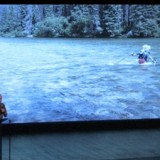


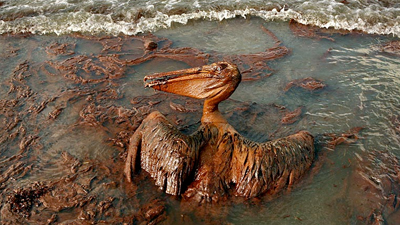 It is thus a testament to our 24-hour news cycle, tabloid-saturated, overworked, short attention spanned society that we have largely already forgotten the sense of sheer powerlessness and intense fear that gripped the world in the months of the Gulf crisis. It is with good cause that Gore Vidal uses the term “the United States of Amnesia.”
It is thus a testament to our 24-hour news cycle, tabloid-saturated, overworked, short attention spanned society that we have largely already forgotten the sense of sheer powerlessness and intense fear that gripped the world in the months of the Gulf crisis. It is with good cause that Gore Vidal uses the term “the United States of Amnesia.”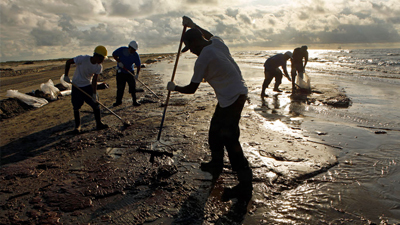 All the while, a slew of breathtaking images poured forth –
All the while, a slew of breathtaking images poured forth –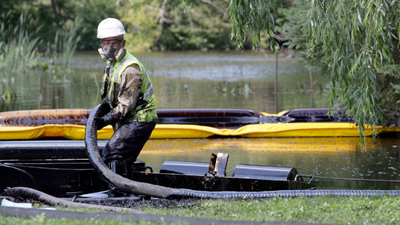 The Gulf itself played host to a
The Gulf itself played host to a 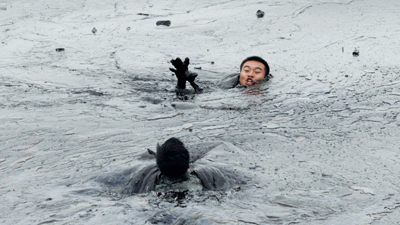 And those are just the big ones. A cursory study of the business of oil, gas, and coal exploitation and use reveals a litany of small-scale – bu nevertheless environmentally significant – pipeline leaks, tailing pond malfunctions, and myriad problems with the extraction, refining transportation, and burning of fossil fuels. They’re all just standar externalities – part of the cost of doing business, born by the planet, whil corporations reap record profits.
And those are just the big ones. A cursory study of the business of oil, gas, and coal exploitation and use reveals a litany of small-scale – bu nevertheless environmentally significant – pipeline leaks, tailing pond malfunctions, and myriad problems with the extraction, refining transportation, and burning of fossil fuels. They’re all just standar externalities – part of the cost of doing business, born by the planet, whil corporations reap record profits.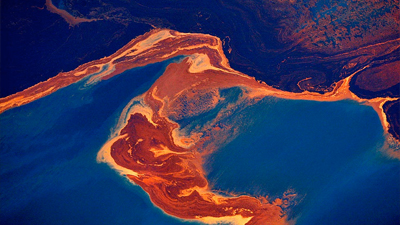 One of the highlights of my 2010 was spending several weeks amid BC’ Great Bear Rainforest, traveling the very coastline Enbridge wishes to se plied by the world’s largest oil tankers. Having witnessed and
One of the highlights of my 2010 was spending several weeks amid BC’ Great Bear Rainforest, traveling the very coastline Enbridge wishes to se plied by the world’s largest oil tankers. Having witnessed and